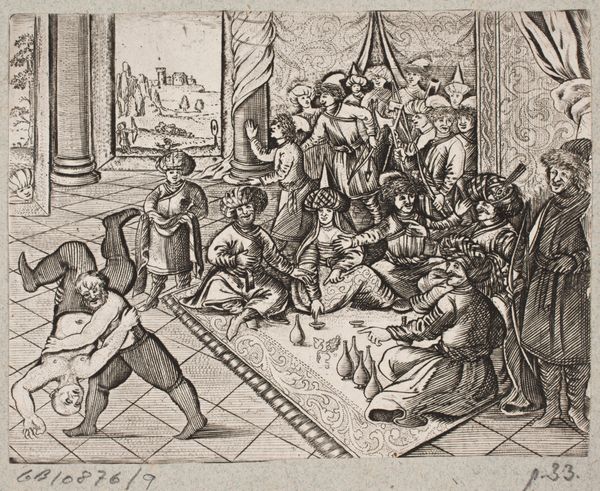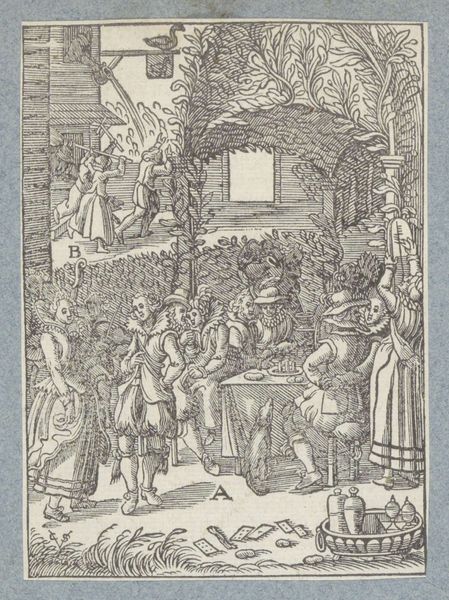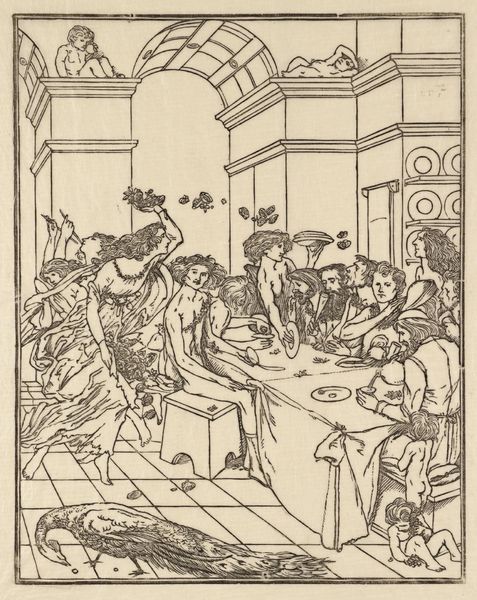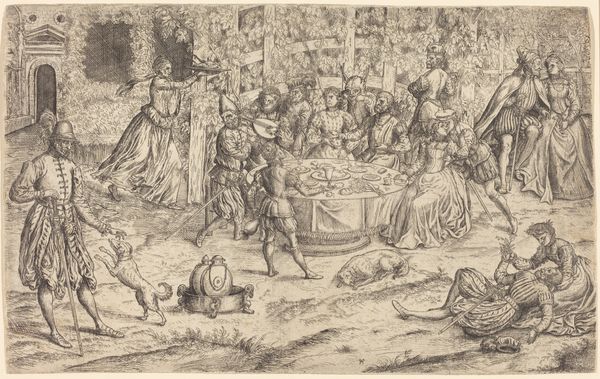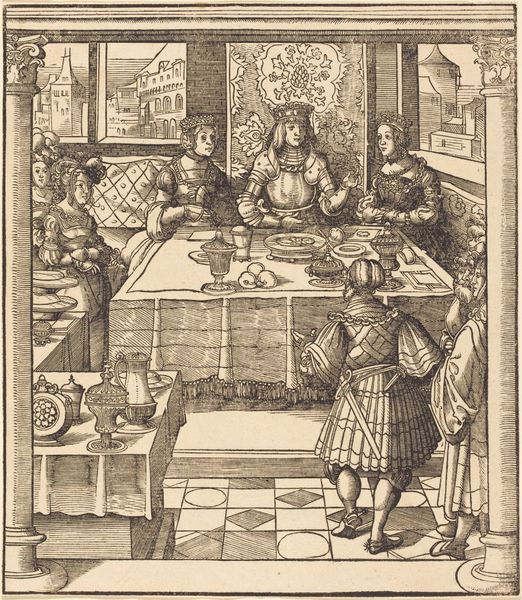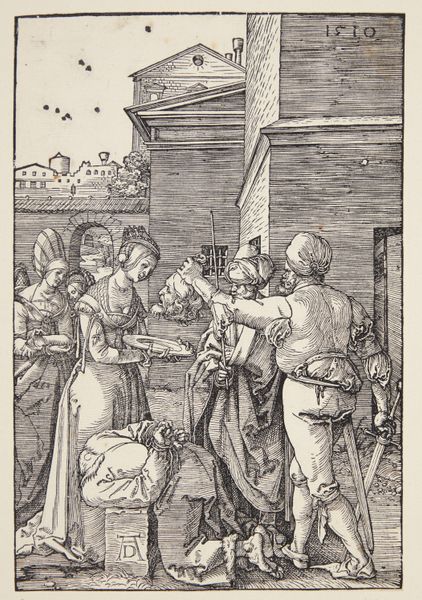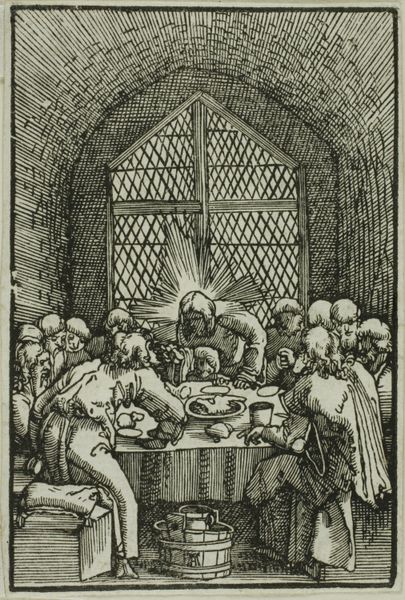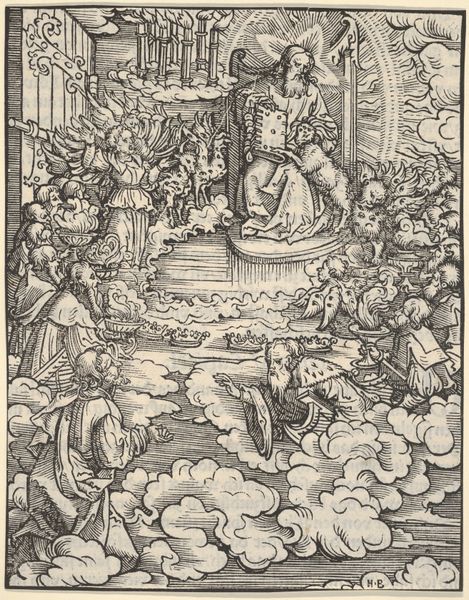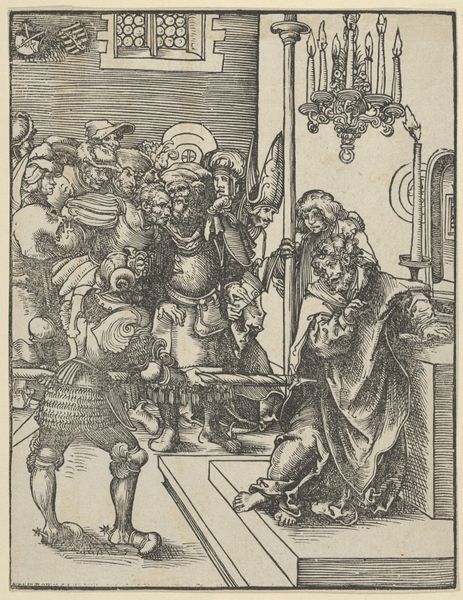
The Last Supper and Christ Washing the Feet of his Disciples, plate nine from Passio domini nostri Jesu Christi c. 1503
0:00
0:00
drawing, print, paper, woodcut
#
drawing
#
narrative-art
# print
#
figuration
#
paper
#
coloured pencil
#
woodcut
#
northern-renaissance
Dimensions: 218 × 155 mm
Copyright: Public Domain
Editor: We're looking at Urs Graf's woodcut from around 1503, "The Last Supper and Christ Washing the Feet of his Disciples." The color feels really unique for a print from this period. What strikes you most about the piece? Curator: Considering its materiality, it's fascinating to see the combination of the woodcut medium with what looks like hand-applied color, perhaps colored pencil, which challenges our notion of printmaking as a purely reproductive process. It asks us to consider the labour involved – both the skilled carving and the manual colouring. How does that impact your interpretation? Editor: That makes me think about value differently, it must have taken so long! So, it's both a print, making it "easier" to produce, but then it had hand-colouring, raising its worth...I wonder how Graf saw the relationship between those aspects. Curator: Precisely! Think about the function of prints at this time - disseminating imagery. The added color, a seemingly small detail, complicates that. Was it meant to elevate the print closer to the status of a painting, a unique object? How does that blur boundaries? Editor: It seems like he was interested in creating something that could be widely distributed but also felt personalized and crafted. Do you think the subject matter of the washing of the feet connects to these themes somehow, with the physical act of cleaning also being a symbolic act of service, of labour? Curator: An insightful observation! The religious narrative underscores labor. Washing feet, preparing the meal--these were real physical tasks. We can't separate that act from the artistic labor of production or from consumption by the owner. Considering this, do you think Graf elevated the status of manual labour within the sphere of the holy? Editor: I hadn’t thought about it like that. Looking at it now, you really see how much work and intention was involved, elevating not only the scene from the Bible, but all types of labour as well. Thanks! Curator: Absolutely! And considering art in its context, you realize what appears as merely an illustrative aid also demonstrates how deeply values about materiality are enmeshed in art-making.
Comments
No comments
Be the first to comment and join the conversation on the ultimate creative platform.
